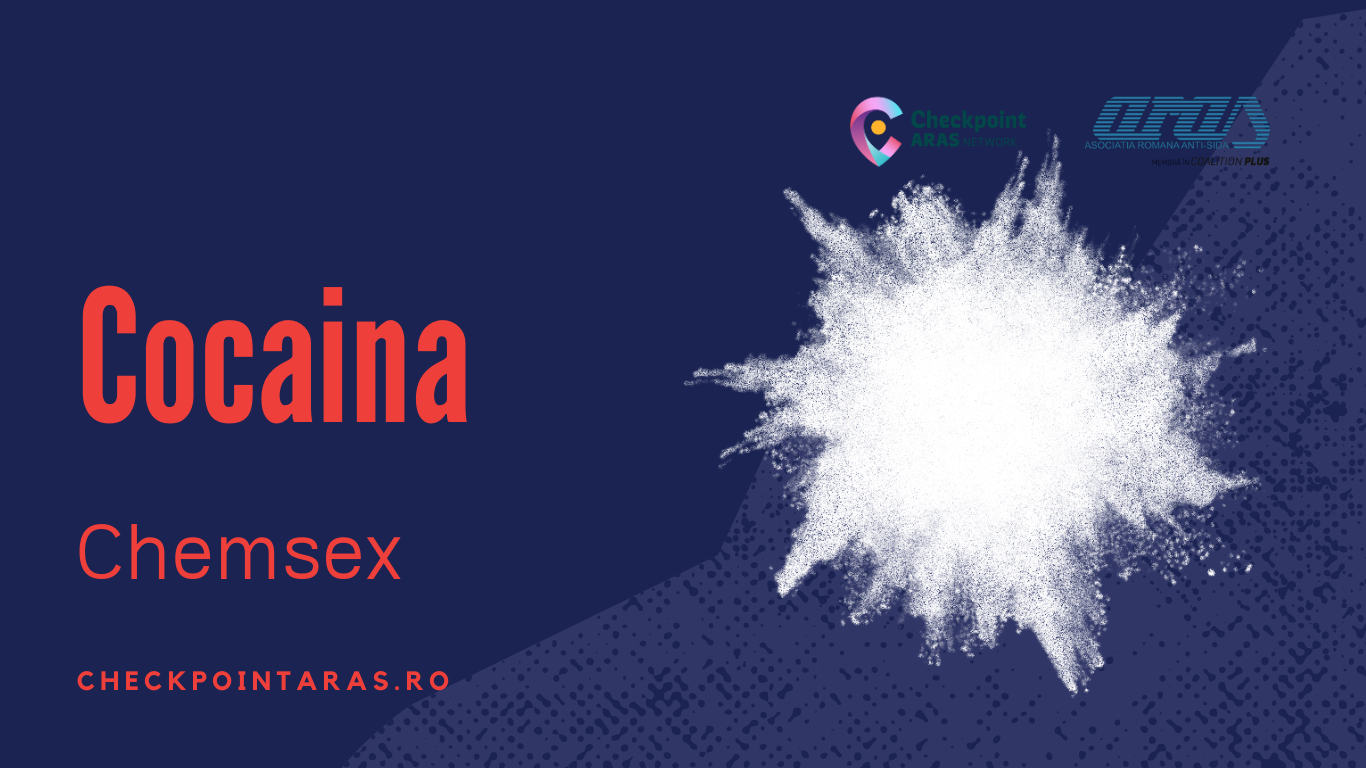Cocaine and crack, both popular in recreational psychostimulant substance use, are rather well known. While not typically included among chems, cocaine is often used in a sexual context and in combination with chemsex substances.
Mixing with prescribed medication and other substances
- Using cocaine with antidepressants affecting serotonin brain function may be dangerous. It can lead to a syndrome which causes palpitation, sweating, convulsions and insomnia.
- Benzodiazepines may counter the psychoactive effects of cocaine and lead to an overdose.
- Paracetamol may increase the adverse effects of cocaine on the liver.
- There is also some evidence that systematic cocaine use may decrease some antiretroviral medications’ effectiveness.
- Cocaine seems to mildly block the effect of amphetamines and other psychostimulants. At the same time, it puts strains on heart functions, increasing the risk of stroke or heart failure.
- Using cocaine in combination with G also requires caution, as it may cause respiratory problems, even respiratory failure. Additionally, as in all combinations of psychostimulants and depressants, this combination may lead to a cocaine overdose.
- Mixing ketamine with cocaine, a combination also known as “Calvin Klein” may dangerously increase ketamine’s toxicity in the body.
- Mixing cocaine with alcohol is quite risky as well, because the two substances are compounded in the body producing cocaethylene, a substance harmful for the heart and liver, which may even cause death.
Harm reduction
Testing before use
Cocaine is often adulterated in a way that can be very harmful. One should be careful and test it before use. This can be done with proper chemical equipment and reagents. If there is no access to such equipment or services, one could taste a very small dose. Cocaine numbs the tongue quickly. Additionally, if melted, adulterated cocaine does not melt evenly and the procedure takes time.
Taking it slow
It is advised to start low and slow the use and try not to take too much (over 60 mgs) in a too small period of time. The effect duration of a moderate dose usually lasts for up to 20 minutes, depending on the tolerance one has developed. Chronic cocaine use may lead to renal, gastrointestinal, cardiovascular, neural and mental health problems.
Grinding down
Cocaine is best grinded to very thin powder in order to be used more safely and avoid overdose.
Sexual health
Regarding sex, cocaine gives energy, sexual arousal, confidence, endurance, heightened senses as well as stronger and longer orgasms. However, it makes one more compulsive, increasing the probability of not employing safer sex practices. Moreover, the intensity of sexual intercourse on cocaine and its anaesthetic effects (sometimes it is rubbed on the anus in order to have harder sex) may lead to broken condoms and injuries that may increase the possibility of blood borne infections. Therefore, it is a good idea to take small breaks during sex in order to check out that everything is OK.
Regarding overdose
There is no consensus of how much cocaine can cause overdose. However, overdose may be very harmful, even fatal. Signs of overdose include seizures, confusion, tremors, respiratory problems, nausea and vomiting, tachycardia, high body temperature, paranoia and hallucinations, as well as panic attacks. In the face of such signs, it is important to cease use and call an ambulance.
Pre-existing conditions
A person facing heart, respiratory, liver, kidney, seizure or psychiatric issues, should avoid cocaine use.

